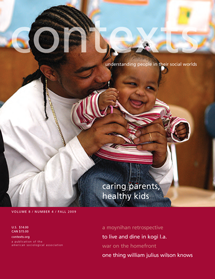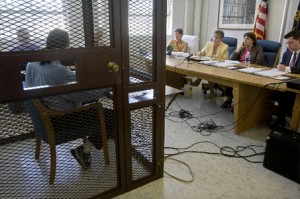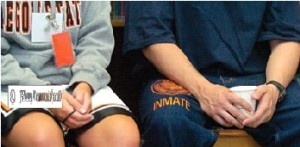 So, Chris scooped me in writing about compensation for exonerees in Texas. The story was on my radar, too, but I’ve got a somewhat different take on it. While I agree that clearing one’s name is a vital concern for many of the falsely accused, I do actually think Texas is offering a relatively generous compensation package. After a 45-day processing period, exonerees can expect to get $80,000 for each year spent behind bars, and lifetime annuity payments that are generally worth between $40,000 and $50,000 per year.
So, Chris scooped me in writing about compensation for exonerees in Texas. The story was on my radar, too, but I’ve got a somewhat different take on it. While I agree that clearing one’s name is a vital concern for many of the falsely accused, I do actually think Texas is offering a relatively generous compensation package. After a 45-day processing period, exonerees can expect to get $80,000 for each year spent behind bars, and lifetime annuity payments that are generally worth between $40,000 and $50,000 per year.
I’ve written about exonerees here before, and it always seemed clear to me that you couldn’t put a price on years stolen from lives by miscarriages of justice. How would you decide what a decade of your life is worth? What is the cost of spending your 20’s and/or your 30’s behind bars? You would miss out on growth, maturity, exploration, and health. One of the biggest regrets I hear from inmates (generally “rightfully” convicted and harshly sentenced) who have spent much of their young adulthood in prison is their fear that they have missed their chance to have families of their own. How much worse must it be if you were imprisoned for a crime you did not commit?
These issues are more real and concrete to me than ever as I follow the case of my inside student, Philip Scott Cannon. Since I first wrote about Philip’s case, his conviction has been overturned. After serving a decade (of a life sentence without the possibility of parole) in prison, he’ll get a chance to present his case again – complete with new witnesses, a new lawyer, and better science – and perhaps he’ll get a second chance at life in the community. If that is the case, I think $800,000 and a guaranteed $40,000-$50,000 per year would give him some peace of mind. His children are his priority, and it would be nice if he could spend time with them without having to immediately worry about getting a job and finding a way to support himself after so many years in prison.
In a letter to the Salem Statesman-Journal, Philip wrote:
Prison sucks, but it can be a place of personal introspection, learning and self-improvement. It has been for me. Contrary to popular belief, the majority of men I’ve met here acknowledge their actions, and the underlying reasons for their having pleaded “not guilty” is to dispute over-blown charges and excessive sentences. Prison can be very violent and life altering. Prison is what you make of it. The true punishment of prison is the separation from your loved ones. My youngest son was born while I awaited trial. I only know him from the precious visits we have had over the years. Our bond is strong, but can it be truly functional under the circumstances?
…When I do regain my freedom, I have no doubt that there will always be some degree of residual suspicion from certain people. That will be my dark cloud. Still, I welcome the burden.
I’ve been thinking about the value of a decade in one’s life, too, because of Tom Curtis, another of my former inside students. Tom was released from the Oregon State Correctional Institution on Friday after serving ten years. His case may be vaguely familiar – he was featured on “America’s Most Wanted” as a teenager. The Oregonian explains his history like this:
Back in high school in the mid-90s, Curtis appeared to have everything going for him. He was an Eagle Scout, homecoming king, track star. He had supportive parents and a college scholarship.
Yet Curtis also led a double life as a masked gunman. He was accused in a string of armed robberies, evaded arrest and eventually landed on the television show “America’s Most Wanted.”
Police described Curtis and a handful of friends as college-bound, middle-class kids in search of excitement. They started with car prowls, then progressed to robbing neighborhood stores, mostly in Northeast Portland….
He disappeared for months, then showed up that June at a post-graduation party thrown by his high school buddies in Mazatlan, Mexico. He drank beer and hung out with his friends. No one turned Curtis in to authorities, sparking a heated debate among Portlanders about youth and the moral lessons they were learning.
I didn’t make the connection between adult Tom and the audacious and dangerous teenager in these stories until his release made headline news in Oregon. I know him as a very bright, motivated student with a quick sense of humor that easily diffused potentially volatile exchanges in the prison classroom. It’s got to be scary – and exciting – for him to get out of prison at the age of 29. It will be a real challenge to put his prison experience behind him and find a way to live up to his Eagle Scout, student body president, homecoming king potential. I hope he gets a chance to continue his education and to make a postive contribution.
How have you spent your last decade? What might the next one be worth to you?
 Just a quick note to point people to the student essay in the current issue of Contexts. My student, Tasha Galardi, wrote about her experience and what she learned in our Inside-Out class this spring 2009. Her observations about the inside students (inmates) and how they helped her come to a new understanding of sociological concepts and criminological theories is thoughtful and revealing.
Just a quick note to point people to the student essay in the current issue of Contexts. My student, Tasha Galardi, wrote about her experience and what she learned in our Inside-Out class this spring 2009. Her observations about the inside students (inmates) and how they helped her come to a new understanding of sociological concepts and criminological theories is thoughtful and revealing.
 Here’s a feel-good story for Halloween:
Here’s a feel-good story for Halloween:  News
News  After weeks of feeling I had nothing interesting to say/blog about, I suddenly have several stories that I would like to comment on and invite others to respond to. I’ll start with the one that raises the most questions for me, and I’ll try to get to the others in the near future.
After weeks of feeling I had nothing interesting to say/blog about, I suddenly have several stories that I would like to comment on and invite others to respond to. I’ll start with the one that raises the most questions for me, and I’ll try to get to the others in the near future. I was struck by this photo by Bruce Ely in the online version of today’s Oregonian.
I was struck by this photo by Bruce Ely in the online version of today’s Oregonian.  From
From So,
So,  Here’s a short and, I think,
Here’s a short and, I think,  after a lengthy conversation with the dude handing out those nifty contexts guitar picks, i’ll break my blog silence by offering a quick update on how i spent my spring/summer non-vacation. the basic overview is represented in the title to this post, which i realize sounds something like a bad b-movie.
after a lengthy conversation with the dude handing out those nifty contexts guitar picks, i’ll break my blog silence by offering a quick update on how i spent my spring/summer non-vacation. the basic overview is represented in the title to this post, which i realize sounds something like a bad b-movie.